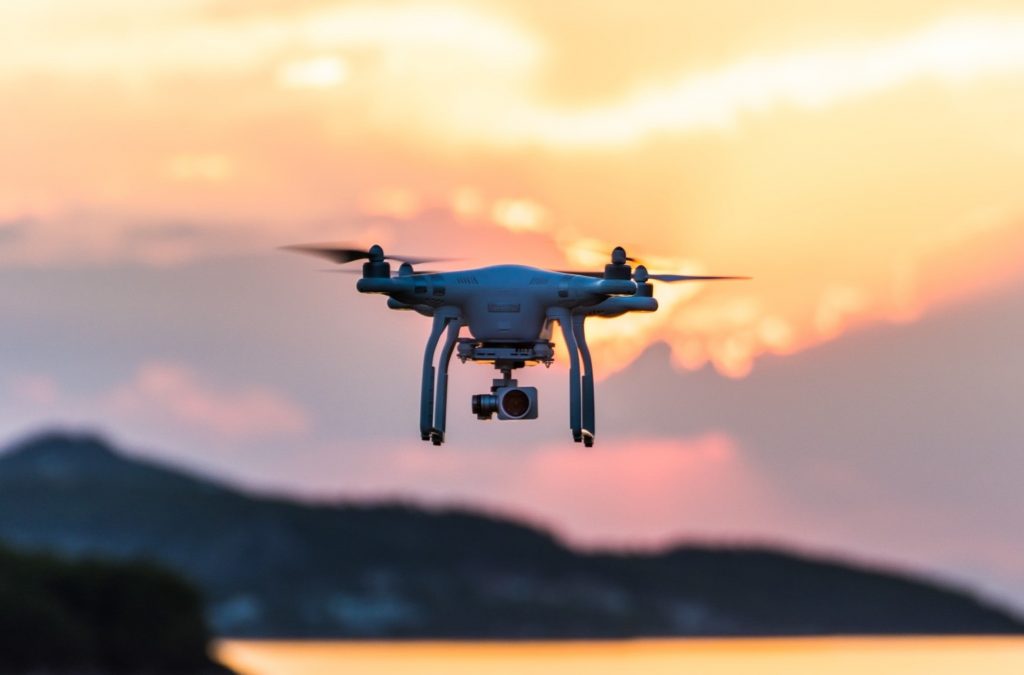The game of drones is gaining momentum globally, changing the landscape (well, airscape) for both commercial and recreational users. The endless possibilities of drone use, from delivery services to aerial videography and even sheep herding are showing that the sky really is the limit.
But it’s not all fun and games — cases of damage and injury are still present, no matter how careful you are as a pilot. If your drone runs out of power and plummets down to earth, or you accidentally lose control of your machine, the result can be catastrophic. Birds of Prey and territorial magpies have been known to bring drones out of the air, too! That’s why there’s laws, regulations, and insurance options across Australia that you should be aware of before take-off — and we’re here to help you get to know them.
If you’re a fan of flying high or are looking to gain your remote-controlled wings, keep reading for our guide to all things drones.
Drones for business purposes
In the small town of Logan, Queensland, it’s not unusual for residents to get their morning caffeine hit delivered by drone.
Google subsidiary Wing chose Logan to launch the world’s first commercial drone delivery service in 2020, and it’s been growing from strength to strength.
Orders worldwide for the drone delivery company’s services have increased about five times since the beginning of the COVID-19 pandemic, helping local economies fly by partnering with small businesses such as cafes, grocery stores and restaurants.
The potential business opportunities with drones are extensive, whether it’s a start-up led by a drone fanatic looking to break into the drone business, or a family-run deli searching for a contactless supply chain.
Drones are now being used and developed for agriculture, farming, aerial spraying, surveying, photography, inspections, mapping, real estate sales, with industry specific drones being created by such companies as DJI and Yamaha. Drones can be multi rotor, fixed wing (like traditional aircraft) and the newest combination of multi rotor and fixed wing.
Drones for recreational purposes
Looking to fly your drone for fun? If you’re lucky enough to own one of these cool gadgets, the entertainment possibilities are endless.
Here are 8 things you can get involved in if you own a drone:
- Join a drone flying club in your local area
- Join a drone racing league
- Take aerial photos and videos of your hikes
- Create a 3D map of your property
- Help locate lost pets in your neighbourhood
- Capture footage during special events
- Take unique holiday photos or travel photos
- Volunteer for scientific data collection and surveying
Drone insurance
But it’s not all fun and games — cases of damage and injury are still present, no matter how careful you are as a pilot. If your drone runs out of power and plummets down to earth, or you accidentally lose control of your machine, the result can be catastrophic. That’s why insuring your Unmanned Aerial Vehicles (UAV) or remotely piloted aircraft (RPA) is critical.
Drone insurance covers the costs associated with accidental bodily harm or damage caused to property or any assets due to drone operations. Drone insurance in Australia involves two main areas:
- Public liability – public liability provides up to $20 million in insurance cover for third-party damage and bodily injury claims arising from the operation of your drone.
- Vehicle and equipment – cover for an agreed value for the loss or damage of your drone and equipment you use to operate the drone (or carry with the drone, the payload).
Laws and regulations surrounding drone use in Australia
In general, for both recreational and commercial use, there are some important rules to know for flying a drone in Australia:
- You must only fly during the day and be able to always see the aircraft with your own eyes (rather than through a device).
- You must not fly your drone higher than 120 meters (400ft) above the ground.
- You must keep your drone at least 30 meters away from other people.
- You must not fly your UAV over or near an area affecting public safety or where emergency operations, such as a car crash site, are underway (without prior approval)
- You must only fly one UAV at a time.
- You must not fly over or above people. This could include beaches or parks.
- Always respect personal privacy. Don’t record or photograph people without their consent — this may breach state laws.
Some laws and regulations surrounding drones in Australia are different depending on their usage purpose and size. For a comprehensive guide, look at the Civil Aviation Safety Authority website.
Having the right drone insurance is no accident
At Allsure Insurance, we can get you ready for take-off, with tailored drone insurance to suit your personal or business needs. Not only do we have extensive insurance expertise, but we also have a licensed drone operator on our team who’s committed to finding the best insurance solutions for fellow enthusiasts.
Contact us today to find out more.

